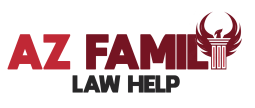Proving fault in accident cases demands systematic evidence gathering and legal expertise. Physical evidence from crash scenes gets collected. Witness statements get recorded before memories fade. Police reports are obtained and analysed. Medical records get compiled showing injury causation. Expert witnesses provide specialized testimony. These combined elements build compelling cases demonstrating how defendants’ actions caused plaintiffs’ injuries. A Santa Ana Personal Injury Attorney employs multiple proof strategies establishing liability through documented facts rather than speculation.
Evidence of breach of duty or measurable harm is the basis for establishing fault. Each element requires specific proof types. Missing any component weakens or destroys cases entirely. Experienced serious injury attorney in Santa Ana knows which evidence matters most for different accident types and how to present it convincingly.
Evidence collection methods
Skid marks tell stories. They show how far vehicles travelled while braking. Measurement and analysis reveal pre-crash speeds. Vehicle damage patterns expose impact angles and collision force. Debris fields scattered across pavement indicate what happened first, second, and third in multi-vehicle crashes. Road conditions matter too. Potholes, oil slicks, faded lane markings, and malfunctioning traffic signals all contribute to what caused the crash. Investigators arrive at crash sites fast. Rain washes away tyre marks. Road crews sweep debris. Repairs happen. Evidence vanishes permanently within days or sometimes hours. Critical physical evidence includes:
- Skid mark measurements revealing braking distances and vehicle speeds
- Vehicle damage patterns indicating impact angles and force levels
- Debris field locations showing collision sequences in complex crashes
- Road surface conditions, including defects or hazardous materials
- Traffic control device positioning and operational status
Surveillance cameras catch accidents on video. Traffic intersection cameras mounted on poles. Business security systems facing parking lots and streets. Dashboard cameras in other vehicles. Even doorbell cameras from nearby homes. Attorneys send preservation letters immediately to everyone who might have footage. These prevent automatic deletion that happens after 30 or 60 days on most systems. Raw video eliminates the argument about what actually occurred versus what people claim happened.
Witness testimony gathering
Other people saw what happened. Passengers, drivers in nearby cars, pedestrians waiting at crosswalks, workers on job sites. Attorneys track these people down fast. Memories decay rapidly. Details blur. After two weeks, people honestly can’t remember what they saw clearly on the accident day. Written statements get signed immediately, preserving what witnesses recall while it remains fresh. Not all witnesses carry equal weight. Someone’s cousin riding in their car gets less credibility than a random stranger who watched from the sidewalk. Multiple strangers telling the same story becomes nearly impossible to refute. Attorneys evaluate witness reliability through:
- Checking their physical vantage points during accidents
- Assessing their attention levels and potential distractions
- Comparing their accounts against physical evidence
- Determining any relationships to parties involved
- Reviewing their backgrounds for credibility issues
Expert witness utilization
Juries need help understanding complex medical and technical matters. Doctors testify about whether treatment was necessary and what future care will cost. Accident reconstruction experts explain crash mechanics. Economists calculate lost earning capacity over working lifetimes. A work injury may limit a worker’s return to work. Cross-examination attacks expert credentials viciously. Opposing attorneys dig through backgrounds, hunting for anything undermining credibility. Strong expert qualifications include:
- Board certifications in relevant medical or technical specialties
- Academic appointments at recognized universities or institutions
- Published research in peer-reviewed professional journals
- Extensive prior testimony experience in similar cases
- Professional recognition through awards or leadership positions
Fault-proof requires assembling multiple evidence types into coherent narratives. Physical evidence shows what happened. Witnesses describe what they observed. Reconstruction applies science. Medical records document injuries. Plain-language explanations of complex concepts. Attorneys show that defendants intentionally harm plaintiffs.

